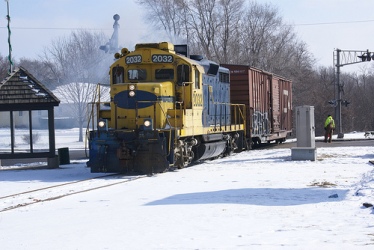Here’s an article from the Wall Street Journal I hope hasn’t escaped the notice of the Journal Star, Junction Ventures, the Sierra Club, and Maloof Realty (not to mention the City of Peoria and Village of Peoria Heights):
Railroads are generating development in the same way they spawned towns and industrial sites over a century ago. Warehouse complexes are popping up next to new rail yards designed to load and unload trains carrying containerized goods. Major distribution operations have opened or are planned in places like Elwood, Ill., Kansas City, Mo., and Columbus, Ohio.
The social consequences are evident in developments like AllianceTexas. In the late 1980s, Hillwood Development Co., founded by Ross Perot Jr., son of the former presidential candidate, built a cargo airport outside Fort Worth, thinking that would be the best way to attract companies to 17,000 acres of land north of the city. As an afterthought, the company says, it made room for a rail yard.
A decade later, it’s the rail yard that has attracted huge warehouses, for companies such as J.C. Penney Co. and Bridgestone Corp. These and others get container loads of jeans, electronics, tires and such from Southern California ports. “I never would have thought having a rail hub in the middle of our development would have attracted so much interest,” says Thomas Harris, a Hillwood senior vice president.
The development, which employs 27,000, has spawned a nearby minicity of shopping centers, a golf course, a racetrack and 6,200 houses. More than 300 of the homes are high-priced models in gated communities.
Railroads have found friends among environmentalists, who see moving freight by train rather than truck as a way to reduce fuel burning and emissions.
Isn’t that interesting? A rail hub in the middle of the development. Attracted huge warehouses. Employs 27,000. Spurred retail and residential development. Not just cheap residential development either — “high-priced models in gated communities.” Helps the environment by reducing emissions. Too bad we don’t have something like that.
Oh, wait….

